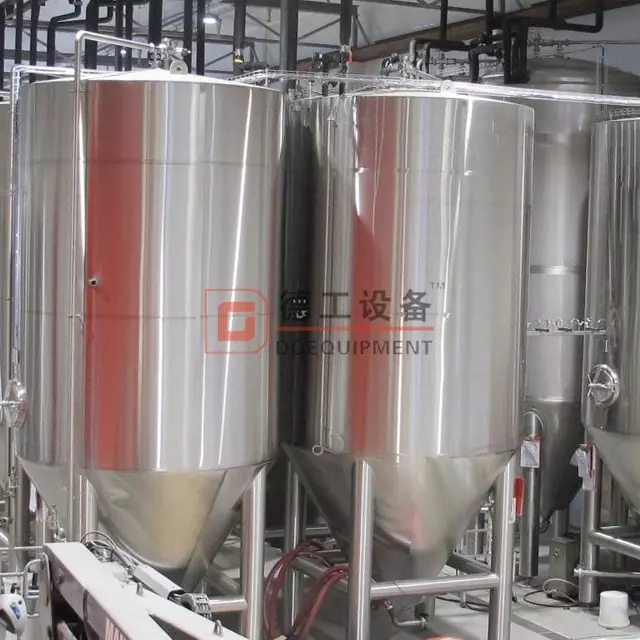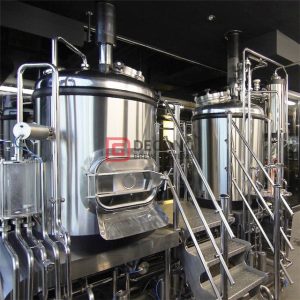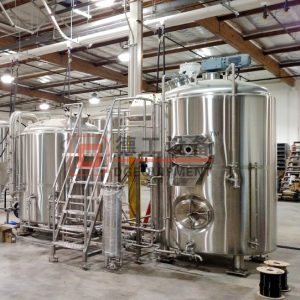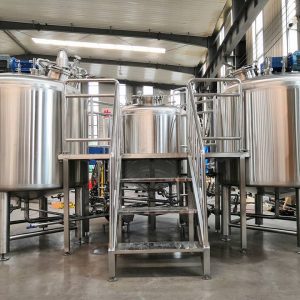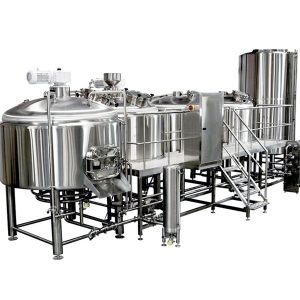Description
DGET breweries offer thoughtfully designed equipment that make brewing easier. Our commercial line of kettles are designed for high efficiency and and our commercial line of mash tanks are loaded with features which simplify maintenance and are designed for ease of use.
Customizations are easily possible, and we make every effort to make sure the systems conform to any unique processes you might have in your production.
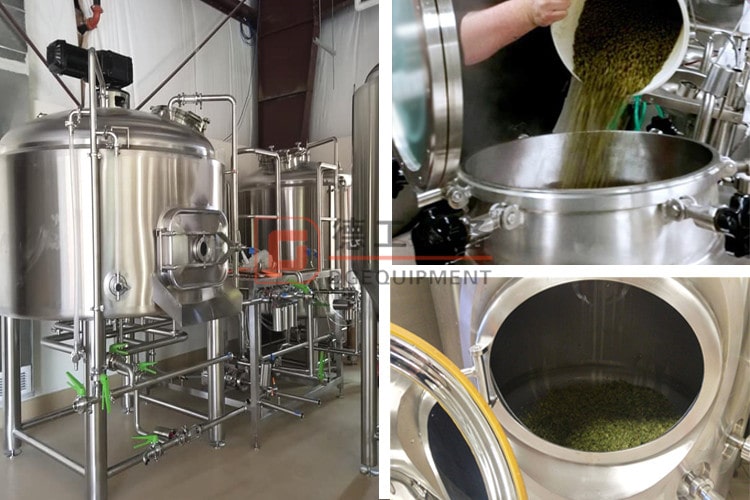
2 vessel brewing system and adding hops
Turnkey brewing system
1-Crushing the malt:
Brewing starts with the crushing of the malt in the grain mill. Malt is grains of barley, wheat or rye that have been allowed to sprout and dry, which is the starting point for beer. The origin of the malt is extremely important for the colour and taste of the finished product. Malt that is roasted to dry will impart a dark colour to the beer.
2-Mashing
Once crushed and softened in hot water in the mash tun, we must carefully control the temperature.
Once the early conversion to sugar has finished and the sweet wort has been pumped into the wort kettle, the mash can be discarded. This spent malt is not only does this allow us to discard our waste, but it also becomes a useful resource.
3-Boiling the malt and adding hops
The sweet wort needs to be boiled for sterilisation, and to drive off some of the water. During the boil, tasty hops are added. The hops added at the onset of the boil provide the bitter edge, whereas hops added later in the process are more aromatic.
4-Chilling and monitoring the wort
After about 90 minutes the boil is finished and the wort must be chilled. Cold water flows through a heat-exchanger from which warm water emerges, ready to kick-start the next brew. The important point here is to control the sugar content and temperature. All measurements are carefully monitored and logged in the Brewer’s log.
Craft brewing system Brewery Fermenters in cellar
5-Fermenting
The chilled wort is pumped into the cylindrol-conical fermentation tanks. This is the key part of the entire process: fermentating. Yeast is added from an earlier brew, plus a little additional oxygen. The oxygen helps the yeast multiply to a suitable concentration. About 24 hours later, the first fermentation froth is removed with a spade and discarded. This is the unwanted froth containing undesirable proteins, dead yeast cells and hop residues.
After about 4-7 days of fermentation, yeast is harvested for the next brew. Allowing the beer to ferment in open tubs for the first few days is vital for the speciality taste that distinguishes. Smooth and tender to the tongue, but still a beer with a powerful explosion of flavour.

The beer brewing system Brite tanks in cellar
6-Cooling the beer
Cooling wort and refrigerate the fermentation tanks and bright beer tanks by chiller unit and glycol tanks(cold water tanks can also be availabe!)
Company introduction:
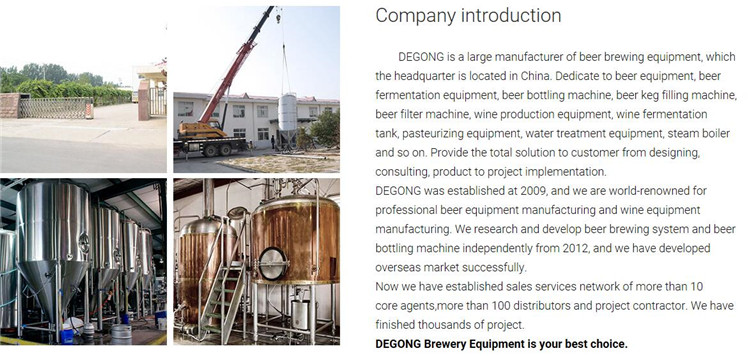
Welcome to visit our website and contact me to get more useful brewing knowledge ,Cheers!!!




